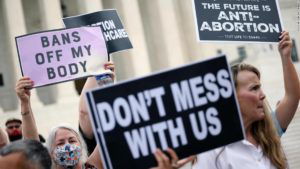
Should an Inventor Prototype or Patent First? Brooks Acordia Intellectual Property Attorney Gives His View
Feb 20, 2014
Los Angeles, CA (Law Firm Newswire) February 20, 2014 – Inventors often struggle to decide whether to develop a prototype of their invention before filing a patent application.
Inventors are not required to create a working prototype of their invention before filing a patent application. A local patent attorney says that no one solution is right for every inventor.
“There are advantages and disadvantages to prototyping,” said Los Angeles intellectual property attorney Jim Dawson. “If the inventor intends to license their patent rights, a prototype can represent an unnecessary expense. Licensees often wish to implement changes to the original design and have no use for a prototype. However, a working prototype can be very useful in marketing the invention.”
A patent application must describe the invention in sufficient detail to allow a person of “ordinary skill” in that invention’s technology area to make and use it. If the inventor is unable to describe the invention in such a way, further research and development will be required, which might best be accomplished by prototyping.
During the prototyping process, it is very common for the inventor to change details about the invention and to improve its design.
If an inventor chooses to file an application before developing a prototype — or to forgo prototyping entirely — and new features or improvements of the invention emerge during the process, a second patent application covering the new features or improvements may be warranted. A patent attorney can help inventors decide, from an intellectual property standpoint, whether to file a second application. An inventor must also consider whether an additional patent is worth its cost from a business standpoint.
If an inventor develops a prototype before filing an application, it can help to ensure that the patent application captures the fully developed invention at its most complete. Because it is important that the original inventor own the entire developed invention, a development agreement should be used to assign all IP rights in the prototyping work to the original inventor.
“It is also a good idea to file a provisional patent application as soon as possible,” added Dawson. “This ensures an earlier priority date for the core invention, which is very important in the post-America Invents Act (AIA) “first to file” system.”
The (AIA), signed into law in 2011, changed U.S. patent law to award patents to the first inventor to file an application (as opposed to the first to invent). Provisional patent applications have low fees and do not require a particular format.
Learn more at http://www.brooksacordia.com/
Brooks Acordia IP Law, P.C.
1445 E. Los Angeles Ave. #108
Simi Valley, CA 93065-2827
Phone: (805) 579-2500
Fax: (805) 584-6427
- Speedy Patent Prosecution, Part Three: Full First Action Interview Pilot Program
The Full First Action Interview (FAI) Pilot Program allows a participating applicant to request a first action interview with a patent examiner prior to the first office action on the merits. The program is intended to enhance communication between applicants and examiners in order to expedite disposition of applications.<br />
After the applicant enrolls in the program, the examiner will provide the applicant with a summary of relevant prior art and proposed rejections or objections to the claims. The applicant must … - SUPREME COURT TO DECIDE WHETHER COMPUTER-IMPLEMENTED INVENTIONS CAN BE PATENTED
Are computer-implemented inventions directed to patent eligible subject matter? This question is now before the Supreme Court in Alice Corporation v. CLS Bank Intl. Oral arguments are set for March 31 and the decision is expected in June 2014.<br />
The patent at issue (U.S. Patent 7,725,375) is directed to an escrow system to reduce risk in settling financial transaction. The Federal Circuit, the court below, considered en banc the patent eligibility (35 U.S.C. 101) of claims of this patent. But … - Speedy Patent Prosecution, Part 2: Accelerated Examination
The previous post in this series covered Track One prioritized examination, a USPTO program with a substantial fee, but no additional preparation required for the application. This post details a very different method of speedy prosecution: the Accelerated Examination Program.<br />
Like Track One, the Accelerated Examination Program has a stated goal of completing examination within 12 months of filing. But the similarities end there. Accelerated Examination has only a small fee, but a significant preparatory burden that entails its own …



